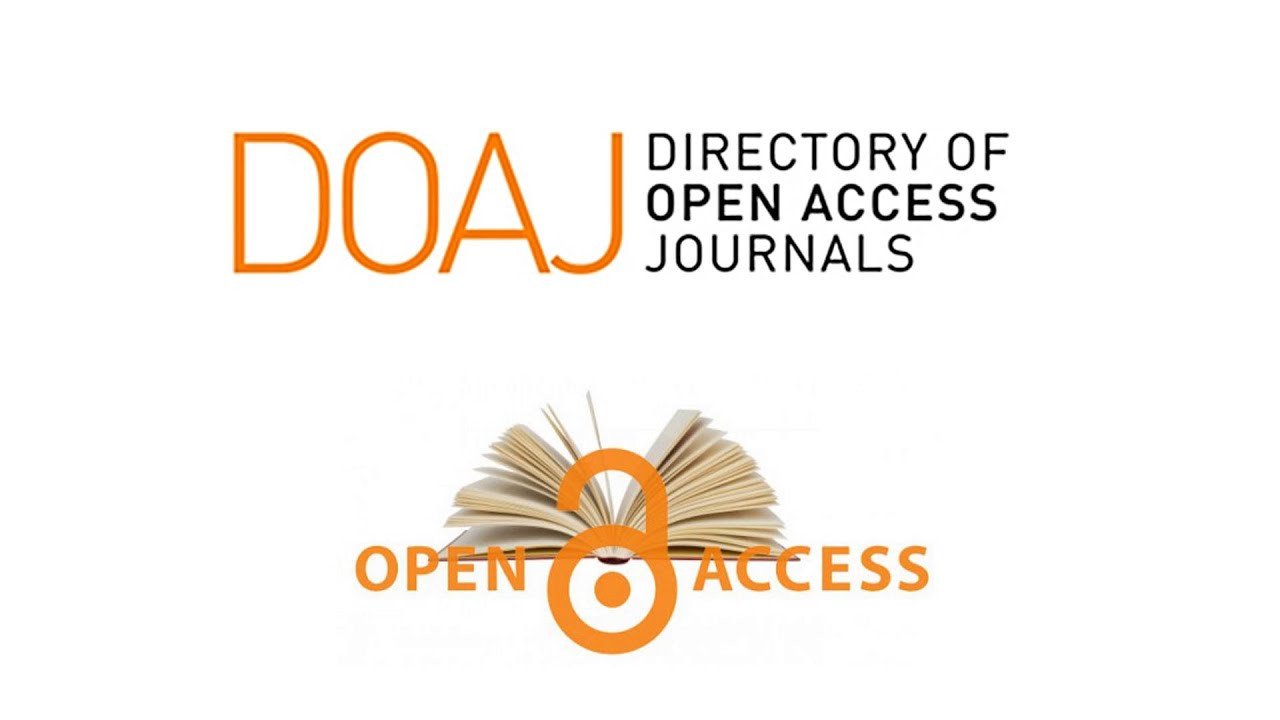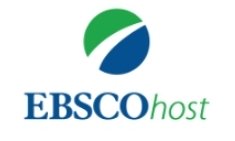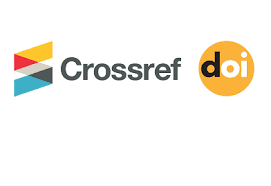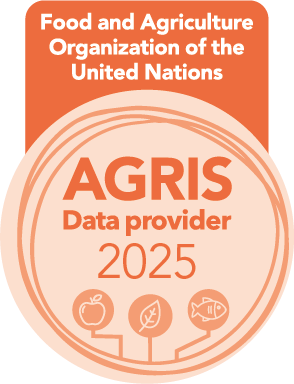Status, Challenges, and Prospects of Aquaculture Development in Iraq
DOI:
https://doi.org/10.58629/ijaq.v22i1.700Keywords:
Aquaculture, Common Carp, Food Security, Iraq, Semi-Intensive Systems, Sustainable Development, Water Resources Management.Abstract
Aquaculture in Iraq has undergone significant development, transforming from rudimentary practices to modern systems that support food security and economic growth. This sector has shown resilience despite facing numerous challenges, including water scarcity, environmental pollution, Political instability, and limited technological resources. Historically, aquaculture production in Iraq has been dominated by carp species, cultivated primarily in earthen ponds and floating cages using deferent agriculture methods. While production has seen periods of growth, such as the adoption of artificial propagation techniques and the rise of private sector involvement, it has also experienced setbacks due to political and economic instability, as well as external environmental factors. Currently, aquaculture contributes nearly 95% of Iraq's total fish production, making it a vital component of the nation's food system. However, constraints like deteriorating water quality, inefficient farming practices, and limited access to advanced technology hinder sustainable growth. This review provides an in-depth analysis of the historical progression, current state, and challenges facing the aquaculture industry in Iraq. Additionally, it explores opportunities for advancing sustainable aquaculture through the adoption of modern technologies, improved resource management, and policy reforms. The findings aim to guide future strategies to enhance aquaculture's contribution to food security, Luxury living, and environmental sustainability in Iraq.
Metrics
References
Abbood, N.N., Jabir, A.A. and Youns, K.H. (2017). The present status of fish farm in floating cages at Thi-Qar governorate. Mesopot. J. Mar. Sci., 32(1):35–44. Doi.org/10.58629/mjms.v32i1
Abd-El-Mooty, M., Kansoh, R., Abdulhadi, A. and Abd-El-Mooty, E. (2016). Challenges of water resources in Iraq. Hydrology Current Research., 7(4): Article 254. Doi.org/10.4172/2157-7587.1000254
Abdullah, Y.S., Abdullah, S.M., Hussein, R.H. (2020). Biodiversity of fishes in Sulaimani Province in Kurdistan Region, Iraq. ZJPAS., 32(1):39–44.Doi.org/10.21271/zjpas
Abdulrahman, N. M., Ahmed, V. M., Ameen, H. J., Salih, H. A., Latif, B. M., Ali, S. S. and Ahmed, A. A. (2017). Comparative study of on fish health indices of rainbow trout (Oncorhynchus mykiss) reared in two sites in Sulaimani governorate, north of Iraq. Biol Appl Env Res., 1(2), 228-236.
Abdulrahman, N. M., Rasool, B. A. and Paruğ, Ş. (2019). Comparıson study of proximate analysis of common carp (Cyprinus carpio L.) fish meet reared in earthen ponds in Ranya (North of Iraq). Iraqi J Sci Technol, 10, 80-8.
Ahmed, A. R., Al-Zewar, J. M., Fawzi, N. A. M. and Abulhasan, A. A. (2020). Culture of common carp (Cyprinus carpio L.) in Basrah Governorate, southern Iraq; Current status and suggestions for development. Eco. Env. and Cons. 26 (2) :, 824-831.
Al-Ansari, N., Adamo, N., Hachem, A. H., Sissakian, V., Laue, J., and Abed, S. A. (2023). Causes of Water Resources Scarcity in Iraq and Possible Solutions. Engineering, 15(9), 467-496. Doi.org/10.4236/eng.2023.159036
Al-Asadi Y.D. (1996). Age, growth, and diet of Khashni fish in one of the fish farms in Babylon. Master's thesis, College of Education Ibn Al-Haytham, University of Baghdad, p. 2.
Al-Dabbas, M. (2024). Some aspects of the environment and biodiversity in Iraq. In: The Geography of Iraq (Ed. Springer Nature Switzerland), pp. 145–169. Doi.org/10.1007/978-3-031-71356-9_7
Al-Daham, N.K. (1990). Fish Culture. Basrah: Dar Al-Hikma. (In Arabic).
Al-Hamed, M.I. (1960). Carp culture in Iraq. Iraqi Journal of Agricultural Research 1(2):14–23.
Al-Helli, A.M., Resen, A.K. and Ali, A.H. (2019). Fish assemblage in the Euphrates River at Al-Samawa city, southern Iraq. Basrah J. Agric. Sci., 32:33–46. Doi.org/10.37077/25200860.2019.138
Aliwi, A.H., Attee, R.S. and Abbas, L.M. (2023). A comparative study of blood physiological characteristics in common carp fish reared in earthen ponds in different locations at the Tigris and Euphrates Rivers in Central Iraq. In: IOP Conf. Series: Earth and Environmental Science, 1259(1):012080. Doi.org/10.1088/1755-1315/1259/1/012080
AlMasawi, N.O., Kawi, M.A.and Jawad, A.A. (2024). Evaluation of water quality of Tigris River at the sites of fish cages in Missan city. In: IOP Conf. Series: Earth and Environmental Science, 1374(1):012057. Doi.org10.1088/1755-1315/1374/1/012057
Al-Nasiri, S.K. (1988). Principles of Fisheries. University of Basrah, Iraq. 155 pp.
Al-Noor, S.S., Al-Nukhtar, M.A., Salman, N.A. and Ali, M.H.(2012). Improvement of induced spawning of Bunnei (Barbus sharpeyi, Günther, 1874) in Iraqi hatcheries. In: Proceedings of the First International Larviculture Conference, Karaj, Iran.
Al-Salem, A.F. (2013). Technical and economical evaluation of fish cage culture projects in Iraq. Iraqi Journal of Agricultural Sciences., 44(5):102–110.
Al-Salihi, Z.A., Kamel, A.H. and Abdulhameed, I.M. (2024). Effect of climate changes on water resources in Iraq: A review study. AIP Conference Proceedings 3009(1). Doi.org/10.1063/5.0190474
Barange, M. (2018). Fishery and aquaculture statistics. FAO Yearbook. Fishery and Aquaculture Statistics. I–82.
BASIN, E.T. (2014). FAO Fisheries and Aquaculture Report No. 1079 RNE/R1079 (En).
Bavarsad, M., Abed-Elmdoost, A., Tabandeh, M.R., Farahmand, H., Alishahi, M., Mirvaghefi, A. and Citarasu, T. (2024). Cyprinid herpesvirus 3 (CyHV-3), koi herpesvirus disease (KHVD) and their current status in Iran: A review. IFSRI., 23(5):783–802. Doi.org/ 10.22092/ijfs.2024.131748
Bekheet, H.N. (2021). The role of water situation in Iraq in exacerbating the problem of food security in Iraq. AJCAS., 1(1):39–51.
CEIC. n. d. Iraq (2024). Aquaculture production. Retrieved December 18, 2024, from
Corner, R., Fersoy, H. and Crespi, V. (2020). Integrated agri-aquaculture in desert and arid lands. FAO Fisheries and Aquaculture Circular (FAO) eng no. 1195 Doi.org/10.4060/ca8610en
Cross, S. (2022). Regional review on status and trends in aquaculture development in North America–2020. FAO Fisheries and Aquaculture Report.
Dasgupta, S. and Robinson, E.J.(2022). Attributing changes in food insecurity to a changing climate. Scientific Reports 12:4709. Doi.org/10.1038/s41598-022-08696-x.
Department of Animal Wealth, Fish Section, Fish Farms Division. (2015). Unpublished data. Directorate of Animal Resources, personal communication, 2024
Dyck, M.(2017). Potential for aquaculture integration with wastewater treatment wetlands in southern Iraq. Unpublished report.
Dyia, H., Abed Hassan, B. and Atheer Hussain, A. (2023). Diversity of freshwater fishes in Iraq. Revis Bionatura., 8 (3) : 109.
El-Sayed, A.F.M. (2017). Regional review on status and trends in aquaculture development in the Near East and North Africa–2015. FAO Fisheries and Aquaculture Circular (C1135/6):1.
FAO. (1989). Aquaculture development and coordination programmer (ADCP). Aquaculture Minutes 4:1–12.
FAO. (2020). The state of world fisheries and aquaculture 2020: Sustainability in action. FAO, Rome. https://doi.org/10.4060/ca9229en.
FAO. (2022). The state of world fisheries and aquaculture 2022: Towards blue transformation. FAO, Rome.
FAO. (2024). Fishery and aquaculture country profiles. Iraq, 2019. Country Profile Fact Sheets. In: Fisheries and Aquaculture. Updated January 16, 2013. Cited November 22, 2024.
FAO. n.d. Fishery and aquaculture country profile: Iraq. Retrieved December 18, (2024). from.
FAO. (2010). Fisheries and aquaculture in Iraq: Institutional overview. FAO, Rome.
FAO. (2010). The state of world fisheries and aquaculture 2010. FAO, Rome.
Food and Agriculture Organization of the United Nations. 2022. The state of world fisheries and aquaculture 2022: Towards blue transformation. Rome: FAO. Doi.org/10.4060/cc0461en.
Garlock, T., Asche, F., Anderson, J., Ceballos-Concha, A., Love, D.C., Osmundsen, T.C. and Pincinato, R.B.M. (2022). Aquaculture: The missing contributor in the food security agenda. Global Food Security 32:100620. Doi.org/10.1016/j.gfs.2022.100620
Harlıoğlu, M., Mustafa, S.O.M. and Batool, Z. (2023). The present situation of the fisheries sector in Iraq: A critical review. COMU J Mar Sci Fish., 6(1):70–75. Doi.org/10.46384/jmsf.1216078
Heckel, J.J. (1843). Abbildungen und Beschreibungen der Fische Syriens nebst einer neuen Classification und Characteristik sämmtlicher Gattungen der Cyprinen. Stuttgart. 109 pp.
Hua, K., Cobcroft, J.M., Cole, A., Condon, K., Jerry, D.R., Mangott, A. and Strugnell, J. M. (2019). The future of aquatic protein: Implications for protein sources in aquaculture diets. One Earth., 1 (3): 316 – 329. Doi.org/10.1016/j.oneear.2019.10.018
Hussain, N.A. and Ahmed, S.M. (2014). Similarity and dissimilarity of macroinvertebrates, fishes, and aquatic bird species composition in three major marshes of southern Iraq. Marsh Bulletin 9(1).
Jasim, A. A. (2007). "Fish Production in Basrah Canal and Shatt Al-Arab." Mesopot. J. Mar. Sci., 35(3), 70-77. http://dx.doi.org/10.33899/magrj.2007.26507
Jawad, L. (2003). Impact of environmental change on the freshwater fish fauna of Iraq. International Journal of Environmental Studies., 60 (6):581–593. http://dx.doi.org/10.1080/0020723032000087934
Jawad, L.A. (2012). History of the study of the fish fauna of Iraq. Water Research and Management 2(3):11–20. Doi.org/10.1080/0020723032000087934
Jawad, L.A. (2021a). The impact of destructive fishing gear on the fish biodiversity in the inland waters of Iraq. In: Tigris and Euphrates Rivers: Their Environment from Headwaters to Mouth, pp. 1207–1224.
Jawad, L. A. (2021b). The importance of non-commercial and small-sized fish species: A proposal for additional revenue to Iraq. In: Tigris and Euphrates Rivers: Their Environment from Headwaters to Mouth pp. 1611–1623.
Jawad, L.A. and Mutlak, F. (2021d). Policy guidance for sustainable aquaculture in the inland waters of Iraq. In: Tigris and Euphrates Rivers: Their Environment from Headwaters to Mouth, pp. 1041–1045.
Jawad, L.A. and Abdulsamad, S.M.S. (2021). How possible to use the desert area in Iraq for aquaculture industry: Basic facts and recommendations. In: Tigris and Euphrates Rivers: Their Environment from Headwaters to Mouth pp. 1047–1052.
Kitto, M.R. and Tabish, M. (2004). Aquaculture and food security in Iraq. Aquaculture Asia 9(1):31–35.
Kroetz, K., Nøstbakken, L. and Quaas, M.(2022). The future of wild-caught fisheries: Expanding the scope of management. Review of Environmental Economics and Policy 16(2):241–261.
Kumar, G., Engle, C. and Tucker, C. (2018). Factors driving aquaculture technology adoption. Journal of the World Aquaculture Society 49(3):447–476. https://doi.org/10.1111/jwas.12514
Landsberger, B. and Kilmer, A.D.(1962). MSL 8/2: The Fauna of Ancient Mesopotamia: Second Part:. Pontificium Institutum Biblicum.
Mahmud, S.F. (2021). Opportunities and challenges of sustainable agricultural development in Iraq. I (IJSRC., 9(1):12–24.
Ministry of Agriculture of Iraq. (2024). Strategies for sustainable aquaculture development. Unpublished manuscript.
Ministry of Agriculture, General Authority for Fisheries Development, Planning and Follow-up Department. (2009). Unpublished data.
Ministry of Agriculture. (2013). Establishment of a specialized hatchery for breeding indigenous Iraqi fish species and restructuring of fisheries management: Formation of the Directorate of Animal Resources. Unpublished government report. Baghdad, Iraq.
Ministry of Planning, Agricultural Planning Authority. (1990). Development, production, and consumption of fish meat in Iraq. Study No. 801. Baghdad. 49 pp.
Mohamed, A.M., Al-Habeeb, F.K., Hussein, N.A., Salman, N.A. and Mutlak, F.M. (2000). Acclimation of small Mugilidae fish from the coasts of South Iraq. Marina Mesopotamica 16(1):239–256.
Mohamed, A.R.M. (2014). Trends in the artisanal fishery in Iraqi marine waters, Arabian Gulf (1965–2011). AJAS.,2(2).
Mohamed, A.R.M. and Abood, A.N. (2024). Evaluating the characteristics, trends, and challenges of marine fisheries in Iraq. Archives of Agriculture and Environmental Science 9(3):508–513. Doi.org/10.26832/24566632.2024.0903014
Mohamed, A.R.M., Hussain, N.A., Al-Noor, S.S., Mutlak, F.M., Al-Sudani, I.M.and Mojer, A.M. (2012). Ecological and biological aspects of fish assemblage in the Chybayish marsh, Southern Iraq. Ecohydrology and Hydrobiology., 12:65–74. Doi.org/10.2478/v10104-012-0006-2
Mohamed, A.R.M. and Jawad, L.A.J. (2021). Marine artisanal fisheries of Iraq. In: The Arabian Seas: Biodiversity, Environmental Challenges and Conservation Measures, Springer, Cham., pp. 917–948. Doi.org/10.1007/978-3-030-51506-5_41
Mohsen ,K. A. (1988). Fish Farming and Management. University of Basrah Press, Basrah. 298 pp.
Nash, R. D., and Geffen, A. J. (2012). Mortality through the early life-history of fish: what can we learn from European plaice (Pleuronectes platessa L.). Journal of Marine Systems., 93, 58-68. Doi.org/10.1016/j.jmarsys.2011.09.009
Oddsson, G.V. (2020). A definition of aquaculture intensity based on production functions—the aquaculture production intensity scale (APIS). Water 12(3):765. Doi.org/10.3390/w12030765
OEC. n.d. Iraq (2024): Non-fillet frozen fish trade profile. Retrieved December 18, 2024, from.
Potts, D. T. (2012). Fish and fishing. A companion to the archaeology of the ancient Near East, 220-235.
Pournelle, J.R. (2003). Marshland of cities: Deltaic landscapes and the evolution of early Mesopotamian civilization. University of California, San Diego.
Poynton, S.L. and Lovatelli, A. (2006). Regional review on aquaculture development. 2. Near East and North Africa–2005. Food and Agriculture Organization of the United Nations.
Rasool, B.A. (2018). A comparison study of nutritional and productive aspects of common carp (Cyprinus carpio L.) reared in earthen ponds in Ranya (North of Iraq). Master's thesis, Van Yüzüncü Yıl University.
Richardson, C.J. and Hussain, N.A. (2006). Restoring the Garden of Eden: an ecological assessment of the marshes of Iraq. BioScience 56(6):477–489. Doi.org/10.1641/0006-3568(2006)56[477:RTGOEA]2.0.CO;2
Rogers, A.J. (2024). Aquaculture in the ancient world: Ecosystem engineering, domesticated landscapes, and the first Blue Revolution. J ARCHAEOL RES., 32(3):427–491. Doi.org/10.1007/s10814-023-09191-1
Rzóska, J. (Ed.). (2012). Euphrates and Tigris, Mesopotamian ecology and destiny (Vol. 38). Springer Science and Business Media.
Saleh, K.I. and Suliman, N.E. (1988). Exploitation of agriculture drainage channels in fish carp cage culture to obtain better rearing density. In: Proceedings of the First Scientific Conference for Technical Education, Baghdad, Iraq, pp. 267–286.
Salman, N.A. (2011). Suggested methods for enhancement of aquaculture in the Southern Marshes of Iraq. IJAQ., 8(2):157–177.
https://ijaqua.uobasrah.edu.iq/index.php/jaqua/article/view/236
Salman, N.A. (2013). The use of locally made fish rearing cages in the Iraqi marshes: A case study. Basrah J. Agric. Sci.,26(1).
Salman, N. A. (2021). Impact of climate change on fisheries and aquaculture activities in southern Iraq. JSFS, 7(3), 41-50.
Doi.org/10.17762/sfs.v7i3.91
Salman, N.A., Saleh, K.I. 2021b. Aquaculture industry in Iraq: Past, present, and future perspectives. In: Tigris and Euphrates Rivers: Their Environment from Headwaters to Mouth. Aquatic Ecology Series, vol 11. Springer, Cham., pp. 1053–1076. Doi.org/10.1007/978-3-030-57570-0_48
Salman, N.A., Saleh, K.I. and Taher, M.M. ( 2022). Cage culture in Iraq, current status and potential: A review. Basrah J. Agric. Sci., 35(2):362–372. Doi.org/10.37077/25200860.2022.35.2.27
Sanon, V.P., Ouedraogo, R., Toé, P., El Bilali, H., Lautsch, E., Vogel, S. and Melcher, A.H. 2021. Socio-economic perspectives of transition in inland fisheries and fish farming in a least developed country. Sustainability 13(5):2985. Doi.org/10.3390/su13052985
Semenova, T., Al-Dirawi, A. and Al-Saadi, T. (2022). Environmental challenges for fragile economies: Adaptation opportunities on the examples of the Arctic and Iraq. Agronomy 12(9):2021. Doi.org/10.3390/agronomy12092021
Shafaq News. (2023). Iraq’s fishing communities grapple with drought and regional pressures threatening traditional livelihoods. Retrieved December 5, 2023, from
Shamsuddin, M., Hossain, M.B., Rahman, M., Kawla, M.S., Tazim, M.F., Albeshr, M.F. and Arai, T. (2022). Effects of stocking larger-sized fish on water quality, growth performance, and economic yield of Nile tilapia (Oreochromis niloticus L.) in floating cages. Agriculture 12(7):942. Doi.org/10.3390/agriculture12070942
Taher, M.M. and Al-Dubakel, A.Y. (2020). Growth performance of common carp (Cyprinus carpio) in earthen ponds in Basrah Province, Iraq, using different stocking densities. Biol.Appl.Environ.Res., 4:71–79.
Tahir, B. and Kareem, I. (2024). Assessment of groundwater quality in the Semel District of Duhok City, Iraq: Implications for agriculture and aquaculture. EJABF., 28(5):685–699. Doi.org/10.21608/ejabf.2024.380405
Temple, A.J., Skerritt, D.J., Howarth, P.E., Pearce, J. and Mangi, S.C. (2022). Illegal, unregulated, and unreported fishing impacts: A systematic review of evidence and proposed future agenda. Marine Policy 139:105033. Doi.org/10.1016/j.marpol.2022.105033
Toffan, A., Marsella, A., Abbadi, M., Abass, S., Al‐Adhadh, B., Wood, G. and Stone, D.M. (2020). First detection of koi herpesvirus and carp edema virus in Iraq associated with a mass mortality in common carp (Cyprinus carpio). Transboundary and Emerging Diseases 67 (2):523–528. Doi.org/10.1111/tbed.13428
Yoder, T.R. (2015). Fishing for fish and fishing for men: Fishing imagery in the Hebrew Bible and the Ancient Near East. Ph.D. dissertation, Department of Near Eastern Languages and Cultures, Ohio State University, Columbus.
Zidan, B.K. (2014). The current situation and reality of fisheries in Iraq. Working Paper of the Ministry of Agriculture presented at the Workshop of the Republic of Tunisia, 16–19 December 2014.
Downloads
Published
How to Cite
Issue
Section
License
Copyright (c) 2025 Iraqi Journal of Aquaculture

This work is licensed under a Creative Commons Attribution 4.0 International License.










